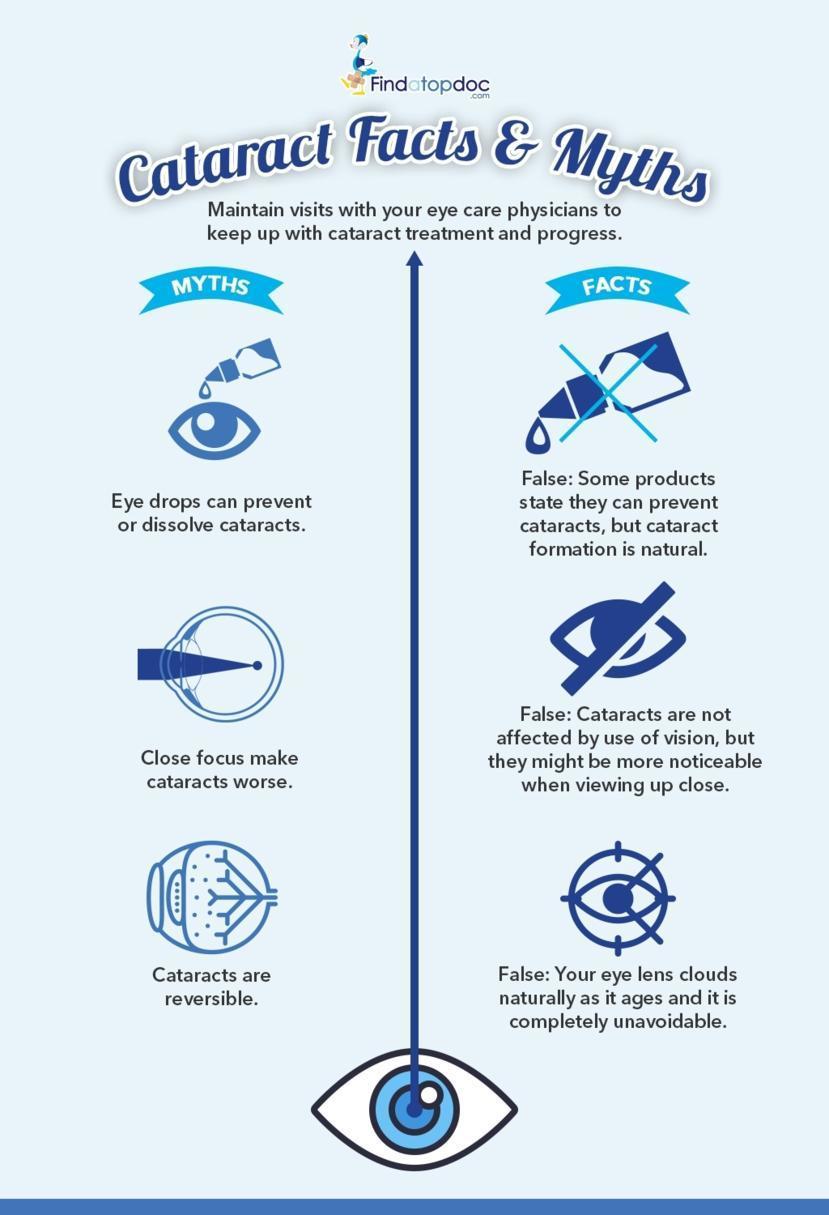What are the Signs and Symptoms of Cataracts?

When the lens of the eye becomes clouded, it is a condition known as cataracts. In patients with cataracts, proteins that are contained in the lens begin to break down, making the lens cloudy with an increase in age. Because cataracts develop very slowly, vision may not be affected right away and the condition may go unnoticed. Although cataracts are not always harmful, it is very likely that they will interfere with a patient's sight after several years. More than 90% of people at the age of 65 have a cataract. Half of all people between 75 and 85 years of have lost some sight as a result of cataracts. To combat misinformation, it is important to understand that overuse of the eyes does not result in cataracts and a cataract cannot spread from one eye to another.
What Causes Cataracts?
The lens of a healthy eye is normally clear to enable light to pass through effortlessly. The lens is made up of 65% water and has no blood supply. As we age, a lot of factors combine to cause cloudiness, toughness, and density in the lens. This occurs even though new cells are generated in the lens throughout our entire lives. In patients with cataracts, the lens is unable to send a clear image to the retina, where it is supposed to be processed and transmitted by the optic nerve to the brain. Cataracts are classified into three groups according to their location: posterior subcapsular, cortical, and nuclear. The following are causes of cataracts:
• Age - This is the leading cause of cataracts.
• Inborn - Although it is rare, some infants are born with cataracts or develop them in their first year of life.
• Trauma - Injuries to the eye can also cause cataracts.
• Secondary - Secondary causes of cataracts come as a result of other diseases or medications.
What Factors Contribute to Cataracts?
• Obesity
• Drinking heavily
• Increase in age
• Smoking
• High blood pressure
• History of eye injuries
• Exposure to radiation from cancer treatments or X-rays
• Diabetes
• Family history of cataracts
• Prolonged overexposure to sun
How to Diagnose Cataracts
Your eye doctor can diagnose cataracts during a dilated eye examination. Vision can also be checked in various light settings and patients may be given a prescription for updated glasses. A diagnosis of cataracts does not require invasive imaging tests, however a full eye examination is often necessary to check if anything else may be causing the symptoms. Cataracts signs and symptoms include:
• Vision that is blurry, clouded, and dim
• Poor vision at night
• Extreme sensitivity to light
• Seeing halos in lights
• Frequent changes in glasses and contact lens prescriptions
• Yellowing or fading of colors
• Double vision
Prevention/Treatment
Although cataracts cannot be prevented, it has proven that avoiding overexposure to direct sunlight can minimize the chances of developing them. Smoking can also increase the risk of cataracts, so those who quit decrease their risk of the condition. The only way of removing cataracts completely is in a surgery where the clouded lens is replaced with an artificial one. This surgery reduces a person's need for eyeglasses and contacts as well. The artificial lenses vary in strength, so it is important to discuss the surgery with an eye doctor and find the one that best suits you. Requiring only local anesthesia, the cataract surgery is usually performed on an outpatient basis. Doctors usually recommend removal of the cataract (s) if it becomes severe and interferes with daily life.
When to seek medical attention
If you see any changes in your vision, make a point of visiting the doctor. Immediately call the doctor if you start experiencing sudden changes in your vision like blurriness or double vision.











